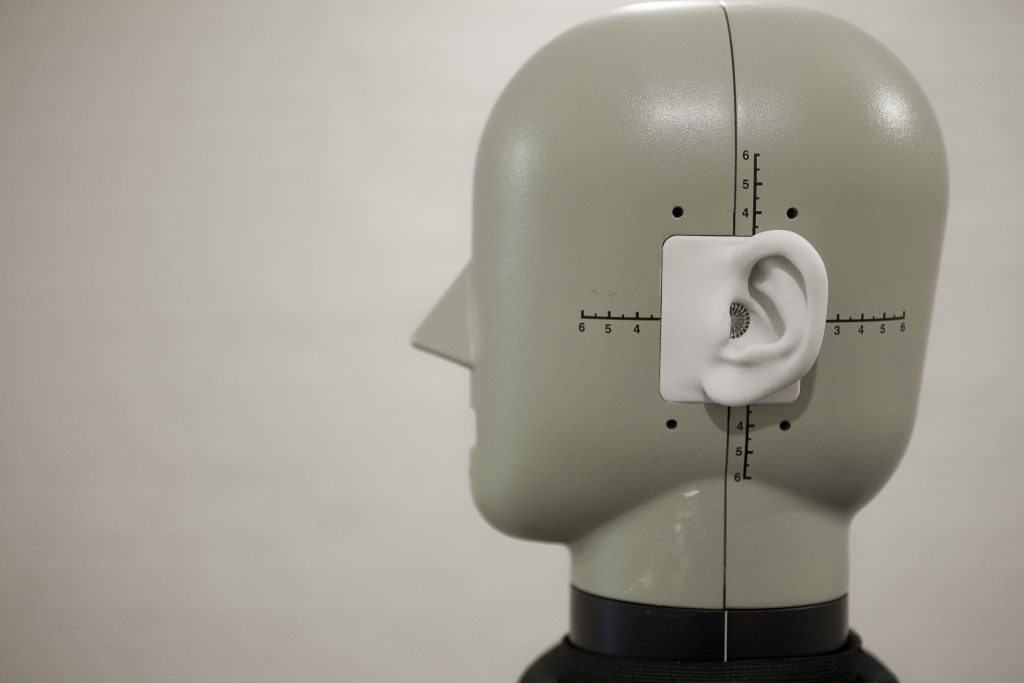Hearing loss in the Built Environment
The experience of the elderly
Bill Davies, Brian Longhurst & Trevor Cox (investigators) and Clare Webb (researcher)
This was a one-year project funded by EPSRC which aimed to identify acoustic problems experienced by elderly people in the built environment, so that future work can explore the solutions. The project used current social science techniques to obtain qualitative data on older people’s use of the built environment. The data was analysed to determine the extent to which acoustic cues affect the patterned behaviour.
Methodology
- Identify the sample;
- Survey the whole sample with a brief questionnaire;
- Survey a sub-sample with a diary to establish patterns of behaviour;
- Explore specific issues using semi-structured interviews with individuals drawn from sub-sample;
- Explore specific issues using focus groups drawn from a sub-sample;
- Synthesise results and conclusions.
Outcomes
It was found that most of the respondents were affected by acoustic problems in the built environment and this detracted from their quality of life. The most significant problem was poor speech communication, often due to background noise and reverberant spaces. Although the main scope of the research was to investigate the built environment, considerable evidence of other difficulties, for example with televisions, hearing aids and telephones were also found. Elderly people have developed a range of adaptive behaviour to cope, such as switching a hearing aid off or lip reading. It was also found that poor sound insulation in houses affect elderly television viewers who felt unable to use a comfortable listening level for fear of disturbing neighbours. It is likely that the effects of these problems can be reduced by more appropriate acoustic design of the built environment. The qualitative research techniques were found to be an efficient way of obtaining naturalistic data from people in their own words. It is likely that they could be successfully applied to other problems involving people in acoustics.
Collaborating Organisations and People
- Age Concern
- Opportunities and Activities
- Dr AT Kearon, Manchester Metropolitan University
Principal User Groups
- Building designers
- Acoustic consultants
- Older and hearing-impaired users
- Acoustics research community.
Aims and Objectives
The overall aim of this pilot study was to identify acoustic problems experienced by elderly people in the built environment, so that future work can explore the solutions. The aim was achieved by meeting the following objectives:
- To survey a group of elderly individuals in an urban environment using a variety of qualitative data collection methods;
- To identify the extent to which acoustic cues in the built environment influence subject behaviour;
- To identify where hearing problems may be ameliorated by better design or remedial treatment of the built environment.
Beneficiaries
The ultimate beneficiaries of this work are a sizeable group: the average hearing loss for speech increases by 5 to 8 dB per decade of age. The fraction of the population with a significant hearing loss will increase as the population ages, so the importance of this work will increase. The immediate beneficiaries are room designers and building acoustics researchers, who will have improved data on the needs of the elderly disseminated to them.
Publications
- Davies, W.J., Cox, T.J., Kearon, A.T., Longhurst, B.J. and Webb, C.L., “Hearing loss in the built environment: The experience of elderly people,” Acustica 87, 610-616 (2001).
- Davies, W.J., Cox, T.J., Kearon, A.T., Longhurst, B.J. and Webb, C.L., “Towards Room Acoustics for an Elderly Population,” Proc. Institute of Acoustics 22(2), 459-466, (2000).
- Davies, W.J., Cox, T.J., Kearon, A.T., Longhurst, B.J. and Webb, C.L., “Hearing loss in the built environment: The experience of elderly people,” Proc. Internoise 2000, 1, 333-336, Nice, 27-30 August 2000.
